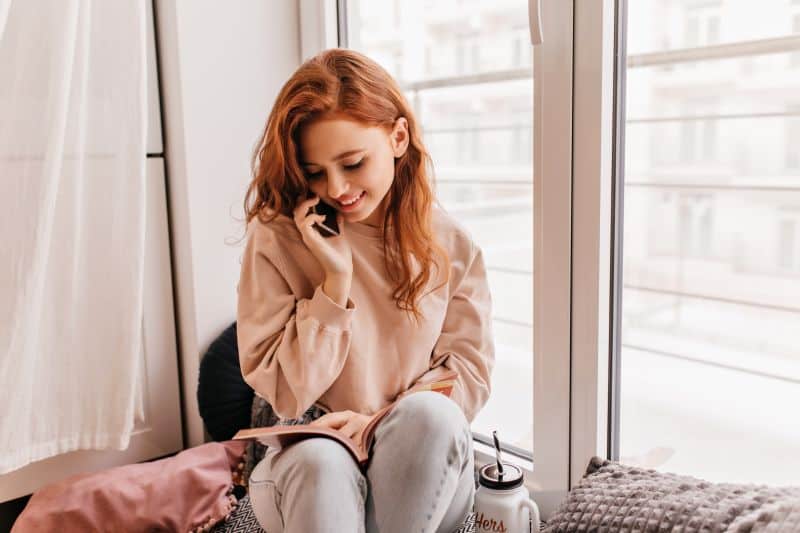Last Updated on January 6, 2023 by Gaga
Can You Dye Your Hair While It’s Wet?
Hair dye can be applied to both wet and dry hair, and which method works best depends on what type of dye you are going to use. Some types of hair dye can be used on wet hair, while others work best on dry hair.
There are some at-home box dyes that come with directions for applying the dye to wet hair. With these dyes, the hair should actually be towel-dried and damp since applying color to sopping wet hair will cause the dye to run. The dye should be left on as long as directed by the manufacturer. Put a shower cap on over your hair and do other things as you wait. Once the recommended amount of time has passed, rinse the dye from your hair thoroughly with lukewarm water.

Note that if you decide to dye your hair yourself, you should always closely follow the directions that came with the product. Coloring products are formulated differently depending on the brand and product, and the instructions that apply to one product do not usually apply to another.
Can You Dye Damp Hair?
Yes, you can. There are a few things that make dying wet hair more convenient than dying dry hair:
1. When your hair is wet, color is easier to apply and distribute, especially if your hair is thick and coarse. You will also need less product to completely cover damp hair with dye.
2. When your hair is dry, you need to use a brush and tinting bowl. Applying dye to wet hair can be done in the shower, making the coloring process more straightforward and less messy.

What Types of Hair Dye Work on Wet Hair?
Temporary dyes can be applied to wet hair, and you will usually get better results than when applying them to dry hair.
Semi-permanent dyes should be applied to wet hair as these dyes don’t contain ingredients like peroxide or ammonia, which are meant to lift the cuticles to allow pigments to adhere. When you wash and towel-dry your hair before color application, it will create the perfect base for semi-permanent coloring because the moisture in your hair will slightly raise the cuticles, making your hair more receptive to the color. If your hair is dry, the cuticles will stay closed and the color molecules will not be able to attach to the hair.
Demi-permanent colors can be applied to either wet or dry hair, but the color will absorb better into wet strands. Moisture in the hair lifts the cuticles, making it easier for the color pigments to wrap around and lightly penetrate the hair. Although it doesn’t fully penetrate the hair shaft, the demi-permanent color will absorb better and last longer than semi-permanent dyes.
Wet balayage is a hair highlighting method in which a hairdresser applies a lightener to damp hair. The results of this method will show more dimension and a more natural look.
Henna dyes will show the best results if applied to freshly washed and towel-dried hair. You can also get good results if you apply henna to dry hair, but like other dyes, it is much easier to distribute the mixture when your hair is wet.

What Types of Hair Dye Work on Dry Hair?
Permanent colors should be applied to dry hair. While dying wet hair with permanent color is possible, you may not get the exact results you want. The most commonly seen unwanted result of using permanent dye on dry hair is an uneven and dull color.
Why Should You Use Permanent Colors on Dry Hair?

There are several reasons why hairdressers practice applying permanent colors to dry hair.
- You do not need water to raise the cuticles like you do when using semi-permanent dyes. Ammonia and peroxide in permanent dyes lift the cuticles, allowing the dye molecules to penetrate deeper layers of your hair.
- When applying color to dry hair, your natural oils work to protect hair from chemical damage. It is preferable that the hair is not freshly washed before dying and instead it is recommended that you wait for a day or two after your last shampoo before dying hair. During this period, natural oils will restore a protective oil barrier that helps to prevent chemical damage. Your hair is at its most fragile when it is wet as the cuticles of wet hair are open, leaving the hair prone to damage. Applying dye containing ammonia and peroxide to wet hair can therefore cause serious hair damage and may lead to breakage.
- Permanent dyes adhere better to dry hair, and the result is a more even, uniform, and vibrant color. When using permanent hair colors, water acts as a dilutant, limiting the amount of color that your hair can absorb and possibly causing the color to look uneven in some sections of your hair.
Takeaways
- Permanent dyes require dry hair, while temporary and semi-permanent dyes work better on wet hair.
- Having your hair colored by a professional will always be your best option if you are thinking about completely changing your color.
- If you buy an at-home coloring kit, always read the full instructions that come with the product because application procedures will vary with every coloring product.

Gaga is a blogger and founder of the Softer Hair website. She often says that insomnia is to blame for her first blogging attempts. Being the night owl, she hated the morning alarm. She left her office job and returned to what she loved most - writing.

